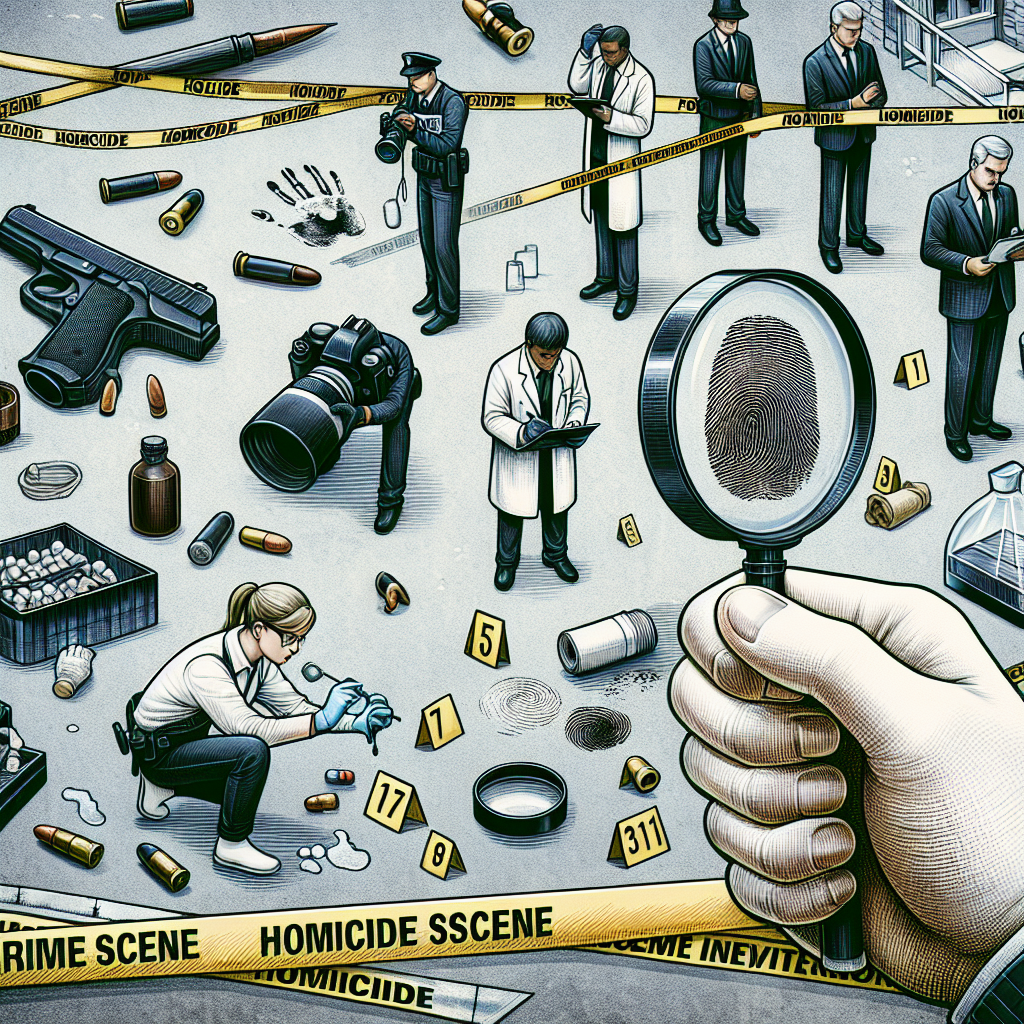
Introduction
Imagine the scene: flashing lights illuminating a dark street, a crowd gathering in hushed whispers, and detectives moving purposefully among the evidence while forensic teams collect data. Behind the scenes, a tremendous amount of work is happening to piece together what led to a tragic loss of life. Homicide investigations are complex and multifaceted, requiring a mix of technology, science, and human intuition. Behind the scenes: the essential tools used in homicide investigations are often overlooked but are critical in solving crimes and delivering justice.
In this article, we’ll peel back the layers of a homicide investigation to explore the tools and techniques that aid investigators. From the latest forensic technology to age-old detective work, every element contributes to solving a case. Let’s delve into these essential tools and techniques that can make or break an investigation.
The Investigator’s Toolkit
Forensic Science: The Backbone of Homicide Investigations
Forensic science plays a crucial role in homicide cases, transforming what can often seem like chaos into coherent evidence. These scientific methods provide invaluable data, allowing investigators to establish timelines, identify suspects, and even predict motives.
Key Tools:
-
DNA Analysis: One of the most revolutionary advancements in criminal investigations has been DNA profiling. By analyzing biological samples from a crime scene—like blood, hair, or skin cells—investigators can link suspects to the crime with remarkable accuracy.
- Fingerprint Analysis: The age-old method of fingerprinting remains a reliable tool. The unique patterns on a person’s fingers can provide crucial evidence, confirming or denying their presence at a crime scene.
Case Study Example:
In 2015, the Chicago Police used DNA analysis to solve a 20-year-old cold case. The victim’s skeletal remains were matched to DNA collected from family members, leading to the arrest of the suspect. This highlights how critical the essential tools used in homicide investigations can be in bringing closure to families.
Digital Forensics: Unraveling Digital Trails
In today’s tech-savvy world, digital forensics has become an essential tool in homicide investigations. Everything from cell phones to social media can yield evidence that not only establishes timelines but also reveals relationships and possible motives.
Key Tools:
-
Cell Phone Data Extraction: Investigators can extract call logs, texts, and location data from mobile devices. This can help identify who the victim was communicating with and their whereabouts prior to the crime.
- Social Media Analysis: Investigating an individual’s social media can uncover threats, disputes, or connections that are vital in understanding motive and opportunity.
Case Study Example:
A notable case involved the 2018 murder of journalist Jamal Khashoggi, where digital forensics played a pivotal role. Analysis of communication between the perpetrators revealed a premeditated plan, demonstrating the critical nature of technology in contemporary investigations.
Crime Scene Investigation: Setting the Stage
The crime scene is where the story begins, and it must be treated with the utmost care and precision. The collection of physical evidence is paramount, as it can directly lead to suspect identification.
Key Tools:
-
Crime Scene Kits: These include a variety of tools such as gloves, collection containers, and evidence markers. The methodical collection of evidence can prevent contamination and misinterpretation.
- 3D Scanning Technology: This enables investigators to create a virtual representation of the crime scene, allowing for detailed analysis even after the physical site has changed.
Analysis:
A perfect example is the Boston Marathon bombing investigation in 2013, which utilized 3D scanning to recreate the event. This led to a wealth of information that secured the conviction of the suspects.
Engaging with Witnesses: The Human Element
Once physical evidence has been collected, the next step is to gather testimonies from witnesses. This can be challenging, as witness reliability can vary. However, interviewing techniques can drastically improve the quality of information obtained.
Key Tools:
-
Witness Interview Protocols: Trained detectives use standardized protocols to ensure consistent and comprehensive data collection during interviews. This helps prevent bias and leads to more reliable testimonies.
- Psychological Techniques: Utilizing psychological techniques can uncover hidden details from witnesses who might not initially realize they have important information.
Case Study Example:
In the 2007 disappearance of Madeline McCann, extensive witness interviews were conducted. Different psychological techniques were employed to help jog the memories of witnesses, which ultimately could lead to more evidence.
Collaboration and Intelligence Sharing
In homicide investigations, no agency can work in isolation. It is vital to share information and collaborate across departments and jurisdictions.
Key Tools:
-
Inter-agency Task Forces: These groups are formed to bring together various expertise and resources. They pool information and tackle cases from multiple angles.
- Intelligence Databases: Databases like NCIC (National Crime Information Center) provide essential data to law enforcement agencies. This includes information on missing persons, stolen property, and known criminals.
Analysis:
The capture of the Golden State Killer in 2018 serves as a powerful example. The collaboration between various law enforcement agencies, forensic experts, and even citizen scientists led to the arrest of a suspect after decades of effective investigations with limited direct evidence.
The Role of Legal Tools
Every investigation must align with legal standards to ensure that the evidence obtained can hold up in court. Understanding legal protocols is essential for investigators to maintain the integrity of their work.
Key Legal Tools:
-
Search Warrants: Obtaining a warrant is crucial for legally gathering information, whether from a property or digital records.
- Chain of Custody Documentation: Maintaining a clear record of how evidence is collected, stored, and transferred ensures that it remains admissible in court.
Case Study Example:
The prosecution in the O.J. Simpson trial faced challenges due to lapses in strict adherence to legal standards concerning evidence collection. This highlights the importance of legal protocols in ensuring the effectiveness of the essential tools used in homicide investigations.
Conclusion
The landscape of homicide investigations is vast and intricate. Each element, from forensic analysis to witness testimonies, and collaboration among departments plays a pivotal role in uncovering the truth. Understanding behind the scenes: the essential tools used in homicide investigations equips us with greater awareness of the sophistication required in solving crimes.
The world of crime-solving is not just a matter of finding the perpetrator; it’s about understanding the nuanced details and interconnections that emerge from tragedy. So, as you think about the next crime drama you watch or the mystery novel you read, remember that real-life investigations involve countless specialists and cutting-edge tools working tirelessly behind the scenes.
FAQs
1. What are the most essential tools used in homicide investigations?
The essential tools include forensic science methods (like DNA analysis), digital forensics, crime scene kits, and collaboration with other agencies.
2. How do detectives ensure evidence is not contaminated?
Detectives use specialized crime scene kits and follow strict protocols for collecting and handling evidence to maintain its integrity.
3. Can witness testimonies be trusted?
Witness testimonies can vary in reliability, but trained detectives use established protocols and psychological techniques to gather accurate information.
4. How important is technology in modern homicide investigations?
Technology plays a vital role in gathering, analyzing, and interpreting evidence, making it indispensable in modern homicide investigations.
5. What legal protocols must be followed during homicide investigations?
Key legal protocols include obtaining search warrants and maintaining a chain of custody for evidence to ensure it is admissible in court.
By understanding and appreciating the essential tools used in homicide investigations, we not only gain insight into the intricacies of crime-solving but also support the continuous pursuit of justice.















